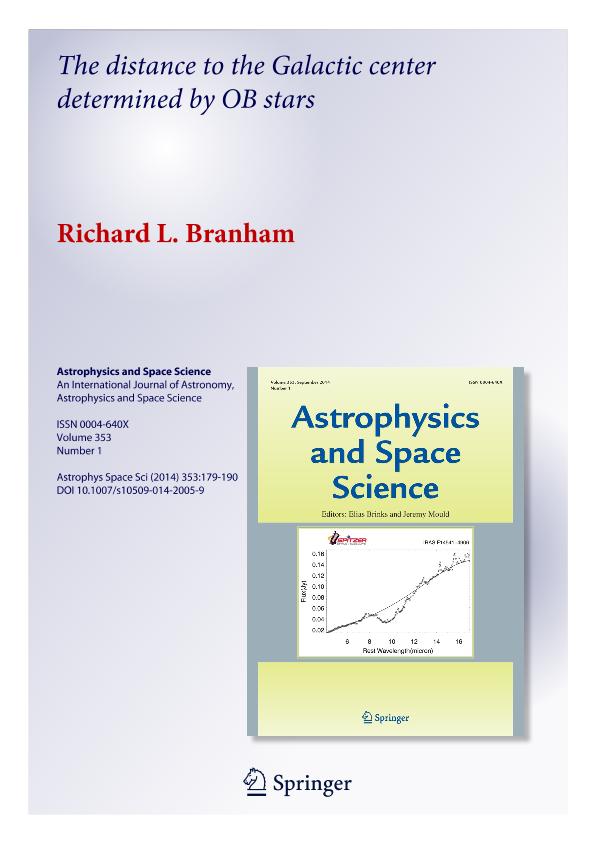Artículo
The distance to the Galactic center determined by OB stars
Fecha de publicación:
09/2014
Editorial:
Springer
Revista:
Astrophysics And Space Science
ISSN:
0004-640X
Idioma:
Inglés
Tipo de recurso:
Artículo publicado
Clasificación temática:
Resumen
The OB stars are concentrated near the Galactic plane and should permit a determination of the distance to the Galactic center. van Leeuwen’s new reduction of the Hipparcos catalog provides, after 824 Gould belt stars have been excluded, 6288 OB stars out to 1 kpc and Westin’s compilation an additional 112 stars between 1 kpc and 3 kpc. The reduction model involves 14 unknowns: the Oort A and B constants, the distance to the Galactic center R0, 2 secondorder partial derivatives, the 3 components of solar motion, a K term, a first order partial derivative for motion perpendicular to the Galactic plane, a second-order partial for acceleration perpendicular to the plane, two terms for a possible expansion of the OB stars, and a C constant. The model is nonlinear, and the unknowns are calculated by use the simplex algorithm for nonlinear adjustment applied to 14313 equations of condition, 12694 in proper motion and 1619 in radial velocity. Various solutions were tried: an L1 solution, a least squares solution with modest (2.7 %) trim of the data, and two robust least squares solutions (biweight and Welsch weighting) with more extreme trimming. The Welsch solution seems to give the best results and calculates a distance to the Galactic center 6.72 ± 0.39 kpc. Statistical tests show that the data are homogeneous, that the reduction model seems adequate and conforms with the assumptions used in its derivation, and that the post-fit residuals are random. Inclusion of more terms, such as streaming motion induced by Galactic density waves, degrades the solution.
Archivos asociados
Licencia
Identificadores
Colecciones
Articulos(IANIGLA)
Articulos de INST. ARG. DE NIVOLOGIA, GLACIOLOGIA Y CS. AMBIENT
Articulos de INST. ARG. DE NIVOLOGIA, GLACIOLOGIA Y CS. AMBIENT
Citación
The distance to the Galactic center determined by OB stars; Springer; Astrophysics And Space Science; 353; 9-2014; 179-190
Compartir
Altmétricas




